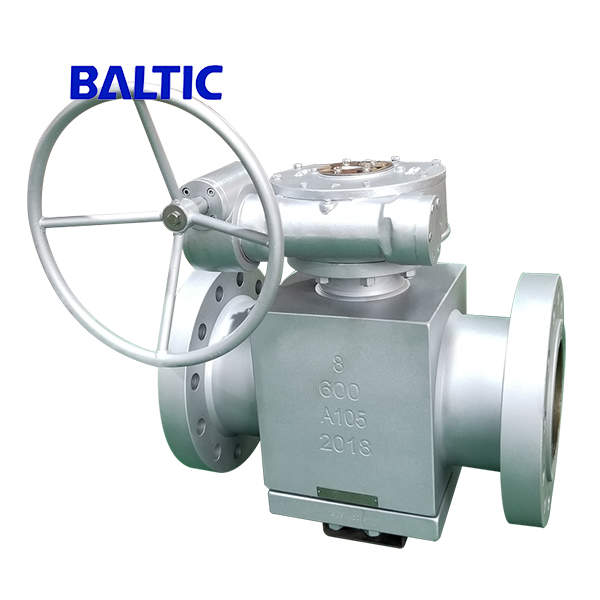Structural Features and Pressure Test Methods of Plug Valves
Structural features of plug valves
Plug valves are valves with cylindrical or conically tapered "plugs" which can be rotated inside the valve body to control flow through the valve. The plugs in plug valves have one or more passages through the plug, so that fluid can flow through the plug when the valve is opened.
In a cylindrical plug, the passageway is generally rectangular, while in the conically tapered plug, the passage is trapezoidal. These shapes make the structure of the plug valve lighter. This valve is most suitable to shut off the flow of liquids, make the medium pass through and split flow, but sometimes it can be also used for throttling according to applicable properties and erosion resistance of the sealing surface.
Pressure test methods of plug valves
(1) When the plug valve is tested for strength, the medium passes through one passageway, the rest passages are closed, and the plug is rotated to all working positions with full opening in turn for testing. The valve is qualified if no leakage is found in the valve body.
(2) For the straight-through plug valve, during the sealing test, the pressure in the cavity should be equal to that in the passageway. Rotate the plug to the closed position and check from the other end. And then the plug is rotated 180 degrees to repeat the above test. For three-way or four-way plug valves, the pressure in the cavity should be equal to that in the one end of the passage. And rotate the plug to the closed position in turn, make the pressure enter from the right-angle end, and check at the same time from the other end.
Before the plug valve test, it is allowed to coat a layer of non-acidic thin lubricating oil on the sealing surface. It is qualified if no leakage or enlarged water drops are found within the specified time.
Plug valves are valves with cylindrical or conically tapered "plugs" which can be rotated inside the valve body to control flow through the valve. The plugs in plug valves have one or more passages through the plug, so that fluid can flow through the plug when the valve is opened.
In a cylindrical plug, the passageway is generally rectangular, while in the conically tapered plug, the passage is trapezoidal. These shapes make the structure of the plug valve lighter. This valve is most suitable to shut off the flow of liquids, make the medium pass through and split flow, but sometimes it can be also used for throttling according to applicable properties and erosion resistance of the sealing surface.
Pressure test methods of plug valves
(1) When the plug valve is tested for strength, the medium passes through one passageway, the rest passages are closed, and the plug is rotated to all working positions with full opening in turn for testing. The valve is qualified if no leakage is found in the valve body.
(2) For the straight-through plug valve, during the sealing test, the pressure in the cavity should be equal to that in the passageway. Rotate the plug to the closed position and check from the other end. And then the plug is rotated 180 degrees to repeat the above test. For three-way or four-way plug valves, the pressure in the cavity should be equal to that in the one end of the passage. And rotate the plug to the closed position in turn, make the pressure enter from the right-angle end, and check at the same time from the other end.
Before the plug valve test, it is allowed to coat a layer of non-acidic thin lubricating oil on the sealing surface. It is qualified if no leakage or enlarged water drops are found within the specified time.

Previous: Tips for Pneumatic Butterfly Valves
Next: The Selection and Application of Butterfly Valves
Next: The Selection and Application of Butterfly Valves




